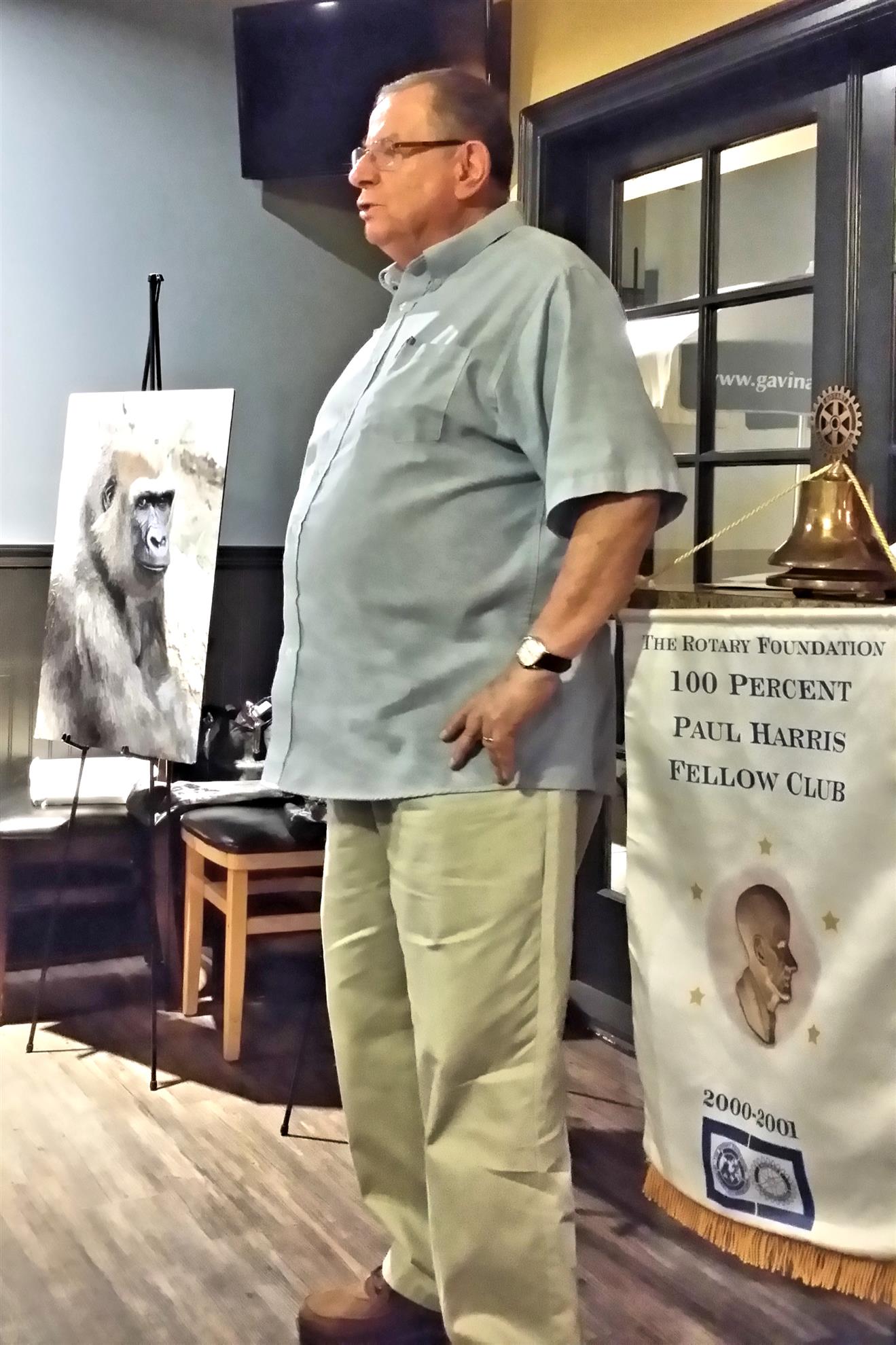This Week's Meeting 11/12/2015
Posted by Dave Davis
on Nov 14, 2015
What a great and engaging meeting this was with Gary Richmond.

Our speaker tonight was Gary Richmond. He served as first veterinary
assistant and zookeeper at the Los Angeles Zoo for seven years.
He is a best selling author and publisher of 22 books including
"A View From The Zoo".
We joined this zookeeper-turned-storyteller as he recalled a couple of
encounters that taught him so much about animals, people, and
the earth we share.

Here is a part of one:
Bringing a giraffe into the world is a tall order. A baby giraffe falls
10 feet from its mother's womb and usually lands on its back.
Within seconds it rolls over and tucks its legs under its body.
From this position it considers the world for the first time and
shakes off the last vestiges of the birthing fluid from its eyes and
ears. Then the mother giraffe rudely introduces its offspring to the
reality of life.
The mother giraffe lowers her head long enough to take a quick look.
The mother giraffe lowers her head long enough to take a quick look.
Then she positions herself directly over her calf. She waits for about
a minute, and then she does the most unreasonable thing. She
swings her long, pendulous leg (that can shatter a lion's head)
outward and kicks her baby, so that it is sent sprawling head over
heels. When it doesn't get up, the violent process is repeated over
and over again. The struggle to rise is momentous. As the baby
calf grows tired, the mother kicks it again to stimulate its efforts.
Finally, the calf stands for the first time on its wobbly legs.
Then the mother giraffe does the most remarkable thing. She
Then the mother giraffe does the most remarkable thing. She
kicks it off its feet again. Why? She wants it to remember how
it got up. In the wild, baby giraffes must be able to get up as
quickly as possible to stay with the herd, where there is safety.
Lions, hyenas, leopards, and wild hunting dogs all enjoy young
giraffes, and they'd get it too, if the mother didn't teach her calf
to get up quickly and get with it.
A trip to the zoo was one we were glad to have taken with Gary tonight!

